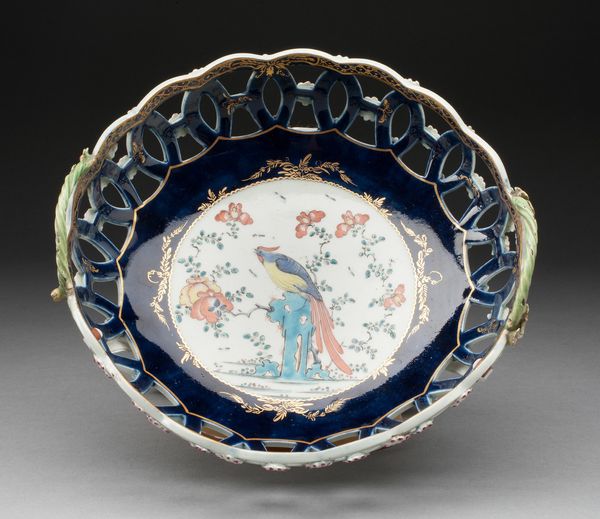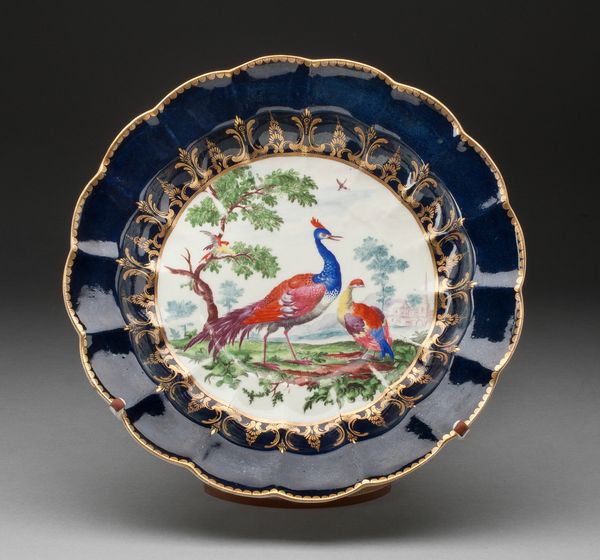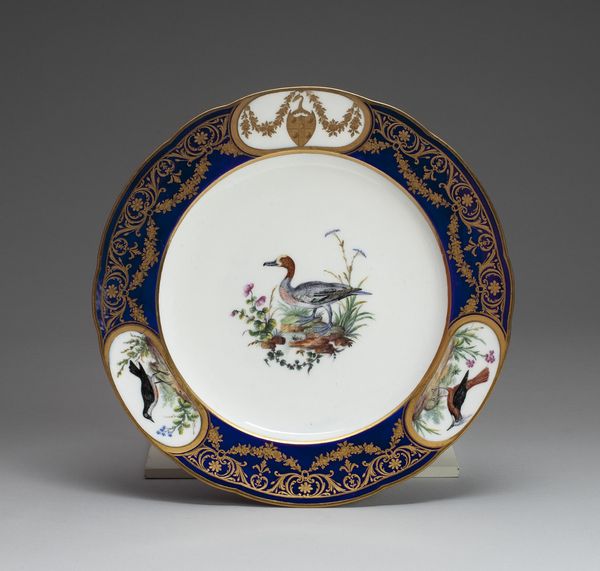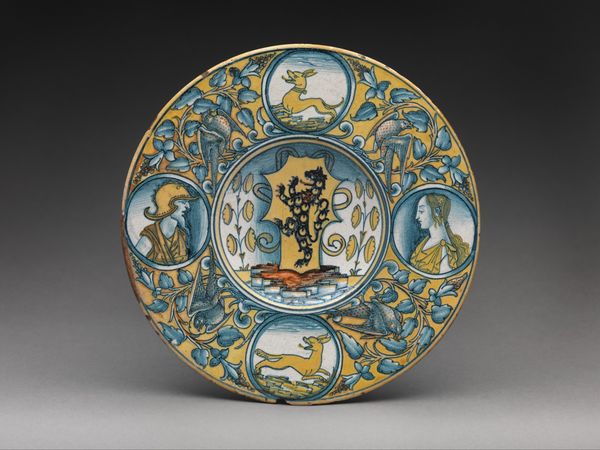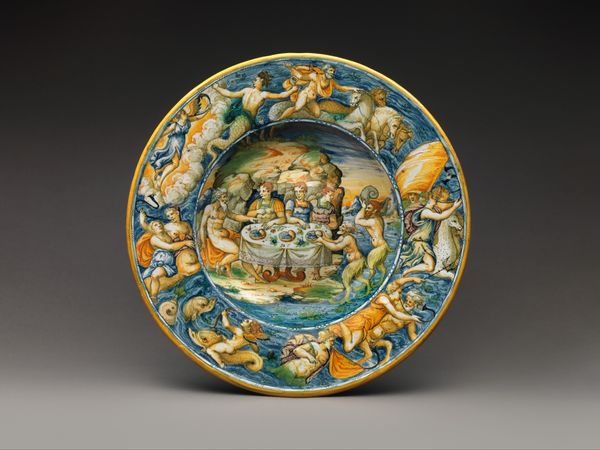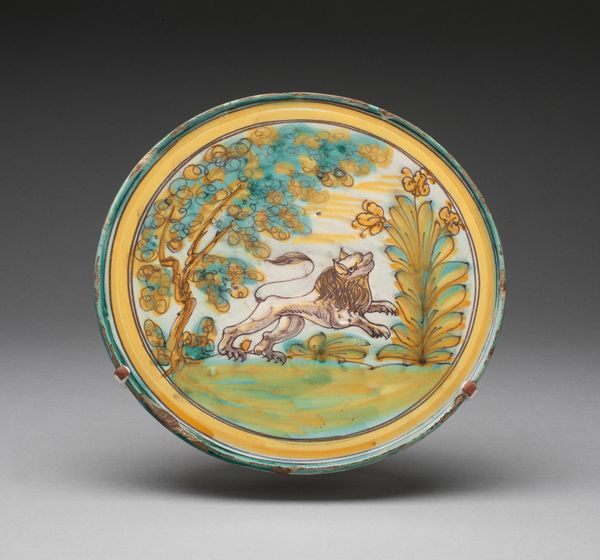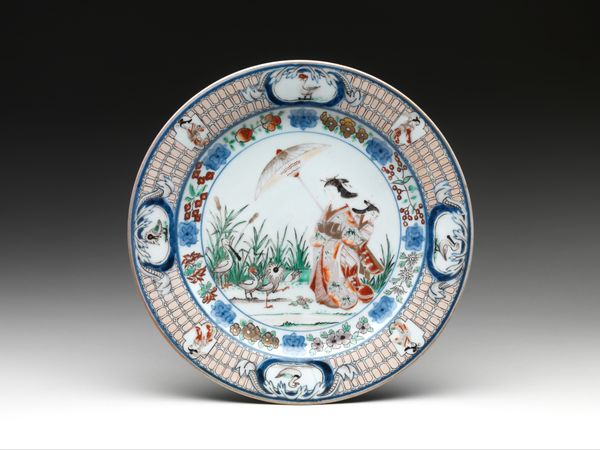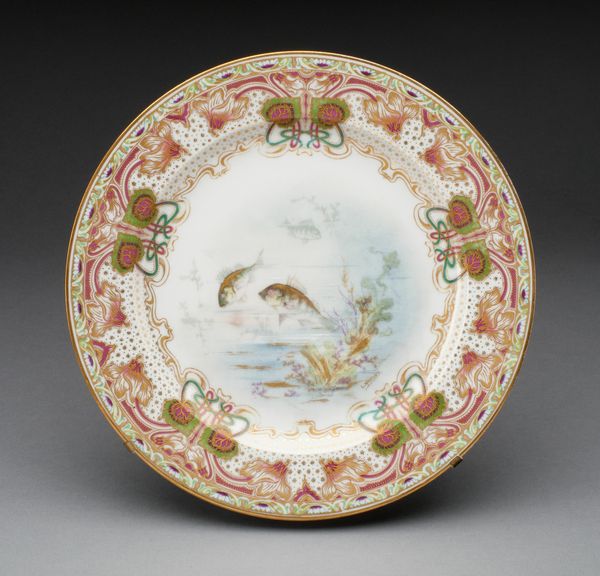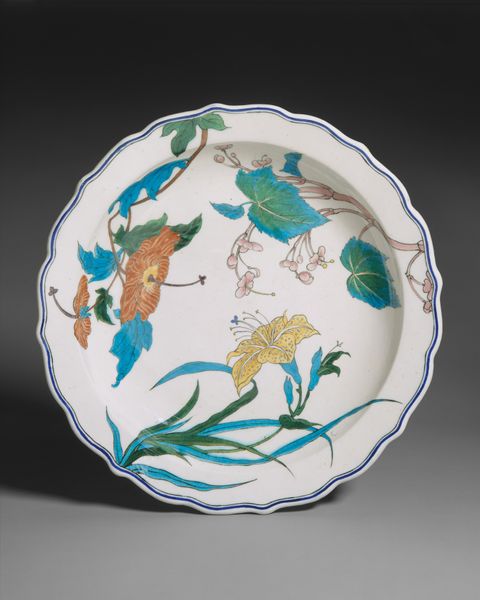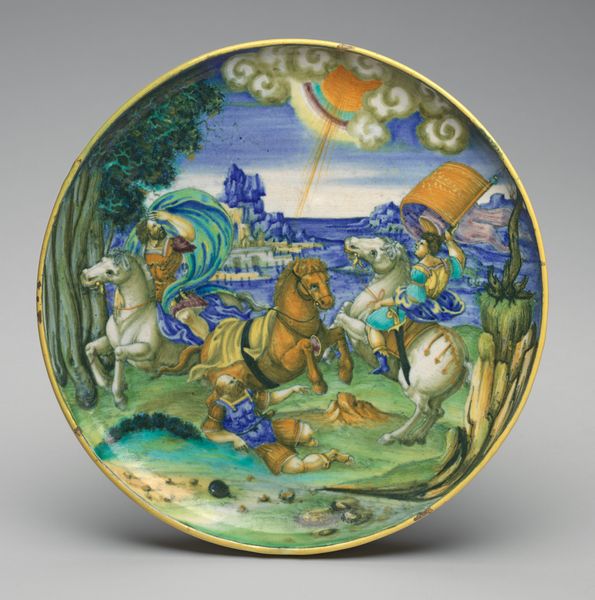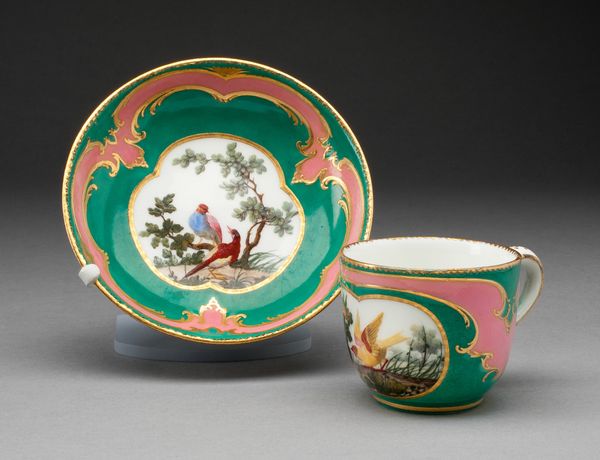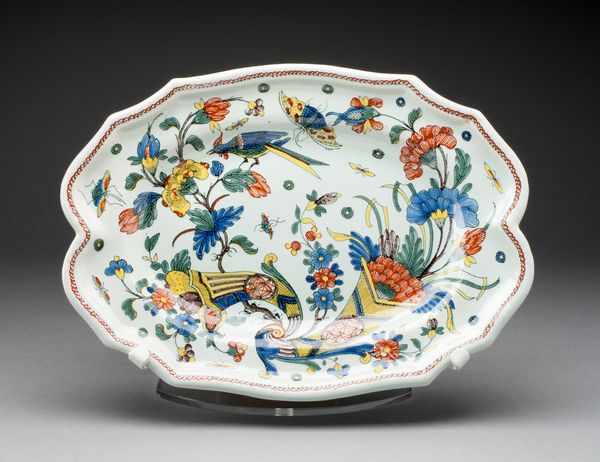
ceramic, porcelain
#
landscape
#
ceramic
#
porcelain
#
ceramic
#
genre-painting
#
decorative-art
Dimensions: H. 7.5 cm (3 in.); diam. 20.8 cm (7 3/4 in.)
Copyright: Public Domain
Curator: Before us is a charming piece from the Worcester Royal Porcelain Company, simply titled "Basket," dating back to around 1768. It’s currently held here at the Art Institute of Chicago. Editor: My immediate reaction is one of surprise. The colors! The miniature landscape. There is so much to visually unpack when you consider its modest use as a tabletop functional item. Curator: Absolutely. Porcelain in this era carries a wealth of symbolic weight. Beyond its decorative appeal, consider the rising merchant classes—these porcelain items reflected refined tastes. The pastoral image of the hunt taps into the symbolic meaning of this popular, upper-class pastime. Editor: Exactly! It's not just about refined taste; it's about social mobility reflected in material choices. Porcelain production involved complex labor divisions and supply chains. Think of the raw materials that needed to be obtained through trade networks to even make a piece such as this. How much further can that basket even travel when fired into shape? And here we find the final stage – a hunt, immortalized! Curator: The hunt serves as an emblem of both power and order—taming of the wild, and such. Consider, too, that in iconography, animals often reflect human characteristics. The eager dog chasing birds speaks of loyalty and aspiration, even desire. Editor: Yes, it also tells the social and environmental circumstances of its origin. I want to trace the making, use, and, potentially, the eventual disposal of this porcelain, because its fragility is actually quite telling; unlike artworks intended to resist decay. We have here not only an art piece, but an item, born of work, and also destined for some inevitable end. Curator: I see your point and in its very intended use we discover our own relationship with our ephemeral nature. Each image, object, each brushstroke, material selection reflects a narrative of history and time, no less the human condition. Editor: Right. Thinking through the object's life cycle in that manner reframes value—it is always both beautiful and imbued with purpose and loss.
Comments
No comments
Be the first to comment and join the conversation on the ultimate creative platform.
